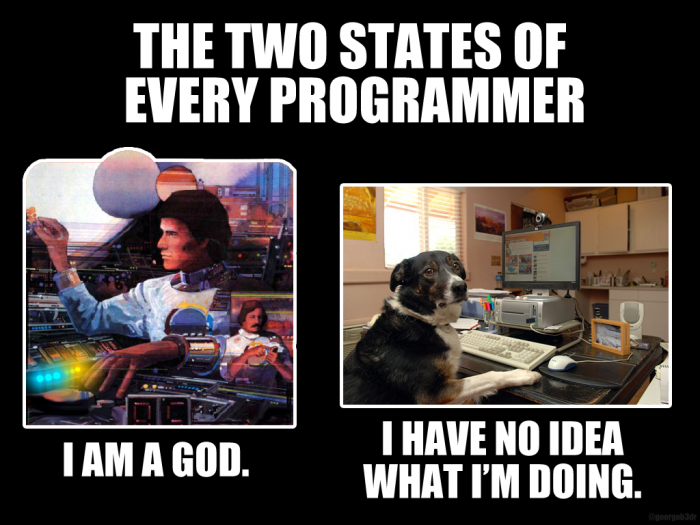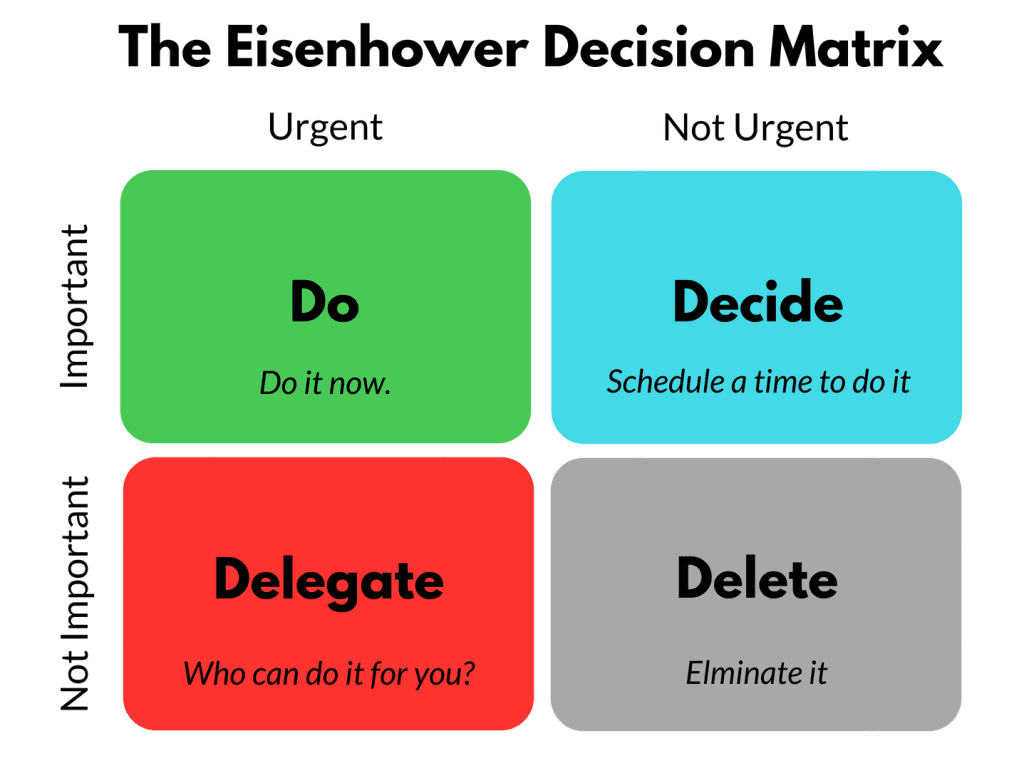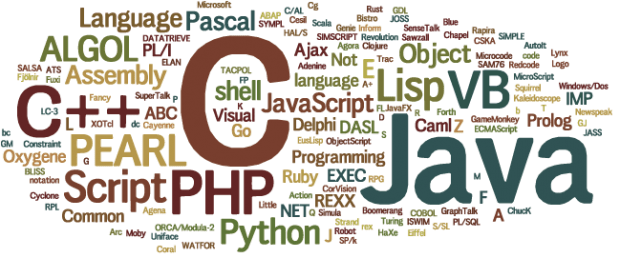Boosting Developer Productivity: Best Practices and Hacks
 Polok Ghosh
Polok Ghosh
In the fast-paced world of software development, productivity is key. As developers, we constantly strive to deliver quality code efficiently, meet deadlines, and stay ahead of the curve. But how do we maintain high productivity levels amidst the ever-evolving tech landscape? In this blog, we will explore some tried-and-true practices and clever hacks that can significantly enhance developer productivity ✅.
Set clear goals
Imagine starting your workday without a roadmap. It's like embarking on a journey without a destination in mind.

In the bustling realm of software development, setting clear goals is akin to plotting your course on a GPS. It's your first step towards a productive day, week, or sprint.
Why are clear goals crucial? Well, they give you direction, purpose, and a sense of accomplishment. They prevent you from wandering aimlessly in the code wilderness and help you focus your energy on tasks that truly matter. This is what I do most of the time 😄.
How do you go about setting these goals? It's all about breaking down your big picture into smaller, manageable pieces. Begin with a high-level objective: "Develop a user authentication system". Then, break it down into smaller tasks: "Design user interface", "Implement backend logic", and "Integrate with third-party authentication services".
Remember, goals give your work purpose. They help you channel your energy and time effectively. So, before you dive into the intricate dance of coding and debugging, take a moment to set clear goals ✅, ensuring you always know where you're headed.
Prioritize Tasks
Ever felt like your to-do list is a never-ending scroll of tasks? 🤔 Welcome to the club! As a developer, your plate is often overflowing with coding challenges, bug fixes, and feature implementations. It's trying to fit a jigsaw puzzle together while some pieces keep falling off the table. That's where the magic of prioritization comes in.
Enter the Eisenhower Matrix, a nifty tool that can transform your task management game. It's like playing Tetris with your to-do list, strategically placing tasks in the right quadrant for maximum impact.
Let's see how it works ⬇️
Urgent and Important: These are your top-priority tasks. Think critical bug fixes, impending deadlines, and customer issues. These are the tasks that demand your immediate attention and can't wait.
Urgent and Important: These are your top-priority tasks. Think critical bug fixes, impending deadlines, and customer issues. These are the tasks that demand your immediate attention and can't wait.
Not Urgent but Important: Ah, the sweet spot. These tasks are crucial for long-term success but don't require immediate action. This is where you plan for the future, like optimizing code, learning a new framework, or refactoring a module.
Urgent but Not Important: Beware the sneaky time-suckers! These tasks might seem urgent but don't contribute significantly to your goals. Delegate or minimize them to free up time for tasks that matter more.
Not Urgent and Not Important: The no-go zone. These tasks can be distractions or low-value activities. Avoid spending too much time here, as they can eat into your productive hours.

Time Management - Mastering the Pomodoro Technique
Time, the most valuable resource in a developer's arsenal, often slips through our fingers faster than lines of code on a screen. Juggling tasks, meetings, and debugging can make the day feel like a blur. That's where time management techniques come into play, and one technique that has gained a cult following in the developer community is the Pomodoro Technique ⏲️.
Named after a tomato-shaped kitchen timer, the Pomodoro Technique is a simple yet powerful strategy to boost your focus and productivity. Here's how it works ⬇️:
Set a Timer ⌛: Choose a task you want to tackle and set a timer for 25 minutes, known as a "Pomodoro." During this time, you commit to working on the task with unwavering focus.
Work Intensely ⚒️: Dive into your task with laser-sharp concentration. The Pomodoro is a sacred time for deep work, free from distractions, emails, or notifications.
Take a Short Break 🎽: After the 25-minute sprint, take a 5-minute break. Step away from your desk, stretch, hydrate, or do a quick mindfulness exercise. This break rejuvenates your mind for the next Pomodoro.
Rinse and Repeat 🔁: After four Pomodoros, take a longer break of 15-30 minutes. This extended break allows your brain to recharge and prevents burnout.
In a technical context, the Pomodoro Technique aligns perfectly with the development process. Coding requires intense focus, and using Pomodoros can help you dissect complex problems, write cleaner code, and debug with precision.
Embrace Automation
In the realm of software development, where efficiency reigns supreme, the mantra "work smarter, not harder" could not be more relevant. Automation, the art of delegating repetitive and time-consuming tasks to machines, is the secret sauce that can supercharge your productivity as a developer.
Let's dive in and reshape your workflow.

The Automation Advantage ✅:
Picture this: You're developing a feature that requires running tests, formatting code, and deploying changes to a testing environment. Traditionally, you'd perform these steps manually, taking up precious minutes that could be better spent on creative problem-solving. Here's where automation swoops in to save the day.
Continuous Integration and Continuous Deployment (CI/CD):
At the heart of automation in development lies the concept of Continuous Integration (CI) and Continuous Deployment (CD). These practices involve using automated pipelines to integrate code changes into a shared repository, run tests, and automatically deploy updates to production environments. Tools like Jenkins, Travis CI, and CircleCI orchestrate this magic, reducing human error and speeding up the development cycle.
Automating Repetitive Tasks:
Think about the tasks you perform daily: code formatting, running unit tests, generating documentation, or even updating dependencies. Automate these tasks with scripts and tools. For instance, use build tools like Gradle or Maven to manage dependencies and build processes effortlessly. Leverage linters and formatters to ensure consistent and clean code.
Version Control and Git Hooks:
Automation extends to version control as well. Git hooks are scripts that trigger actions at specific points in your Git workflow. For example, you can set up a pre-commit hook to run linting and formatting checks before your code is committed. This ensures that only polished code makes its way into the repository.
Deployment Automation:
Deploying applications can be complex, especially in microservices environments. Tools like Kubernetes orchestrate the deployment, scaling, and management of containerized applications. Automate the deployment process to eliminate manual errors and ensure consistency across environments.
Monitoring and Alerts:
Automation isn't just about development; it extends to operations too. Use monitoring tools like Prometheus and Grafana to set up automated alerts for performance metrics, system health, and security breaches.
The Technical Side ⚙️:
From a technical standpoint, automation involves writing scripts, configuring pipelines, and leveraging APIs. YAML or JSON files define CI/CD pipelines, specifying steps like building, testing, and deploying. These scripts can trigger on code changes, time intervals, or specific events.
Continuous Learning and Documentation
In this ever-evolving landscape of software development, staying ahead of the curve isn't just an advantage, it's a necessity. Continuous learning and meticulous documentation are two powerful practices that can propel your development journey to new heights. Let's delve into how these practices, when intertwined, can bolster your skills and contribute to a more efficient workflow.

Exploring New Horizons ☀️:
Whether it's diving into the intricacies of a trending JavaScript framework or venturing into the world of machine learning, continuous learning keeps you adaptable and opens doors to exciting opportunities.

Online Courses and Tutorials 📑:
Platforms like Coursera, Udemy, and MIT OpenCourseWare offer a plethora of online courses, making knowledge accessible from the comfort of your home. Engage with structured lessons and hands-on projects to deepen your expertise.
Coding Challenges and Hackathons 👩🏽💻:
Participating in coding challenges on platforms like LeetCode and HackerRank hones your problem-solving skills and exposes you to diverse coding scenarios. Hackathons push you to innovate under pressure, fostering creativity and collaboration. Also, you can win prizes 💵🤑, one great source of motivation right?!
Attend Conferences and Workshops 🏢:
Tech conferences are treasure troves of insights, where you can learn from industry experts, discover emerging trends, and network with fellow developers. Workshops offer hands-on experiences to master new tools and techniques.
The Power of Documentation 🖇️:
Imagine joining a project where code is a labyrinth and documentation is scarce. Documentation is the unsung hero that saves developers from confusion, prevents reinventing the wheel, and ensures smooth collaboration.
Here's one thought I want to share, written by Gaurav Sen 😍
Effective Communication 🗣️:
Well-documented code explains its purpose, usage, and edge cases. This clarity facilitates collaboration among team members and minimizes misunderstandings.
Creating a Knowledge Base 🪢:
Documentation extends beyond code to encompass architectural decisions, design patterns, and project guidelines. A comprehensive knowledge base empowers new team members to onboard seamlessly.
Blogging and Sharing 🤝:
Writing technical blogs not only solidifies your understanding but also contributes to the developer community. Sharing your experiences, challenges, and solutions fosters learning and collaboration.
You can also head over to the WeMakeDevs blogging challenge ✅ and get motivated to write on the topics mentioned and win prizes 🥳.
Technical Side ⚙️:
Learning is a blend of online courses, reading documentation, and practical application. Experiment with coding challenges, attend webinars and contribute to open-source projects to gain hands-on experience.
In a field where innovation is the norm, continuous learning and documentation are your compass and map. They guide you through uncharted territories, keep you grounded in the basics, and empower you to build robust, elegant, and well-documented solutions. As a developer, your journey is not only about the code you write today but about the knowledge and legacy you leave for tomorrow.
Miscellaneous
Keyboard Shortcuts ⌨️:
Mastering keyboard shortcuts can significantly speed up your workflow. Learn shortcuts for your IDE, terminal, and other tools you use frequently.
Code Reviews 👨🏽💻:
Participating in code reviews improves code quality and encourages knowledge sharing. Provide constructive feedback and learn from your peers' suggestions.
Avoid Multitasking ❌:
While it might seem efficient, multitasking can lead to decreased focus and increased errors. Focus on one task at a time to achieve better results.
Utilize IDE Features 💪🏽:
Your integrated development environment (IDE) likely has a wealth of features that can boost productivity, such as code suggestions, refactoring tools, and debugging aids.

Conclusion
Productivity is not a destination but an ongoing journey. Regularly assess your strategies, adapt to changing circumstances, and adopt new practices that align with your evolving needs. The quest for efficiency is a perpetual one, rewarding those who embrace change and innovation.
In conclusion, the art of boosting developer productivity lies in a symphony of strategies, habits, and techniques. By orchestrating your work environment, embracing automation, nurturing your skills, fostering collaboration, and maintaining your well-being, you transform yourself into a more effective and fulfilled developer. Productivity is not a solitary endeavor; it's a harmonious dance between you, your code, and the goals you seek to achieve. So, embark on this journey with purpose, curiosity, and a commitment to achieving your best work. Your code is your canvas, and productivity is the brush that paints your masterpiece.
YOU GOT THIS !!! 🔥🔥

Thank you for reading 💖🧡💛💚💙
Also read:
2022 Wrap Up
Tackling misconfigurations with Datree.io
Reach out:
Twitter: Stompingdrake368
LinkedIn: Polok Ghosh
GitHub: Polokghosh53
Email: polokghosh53@gmail.com
Subscribe to my newsletter
Read articles from Polok Ghosh directly inside your inbox. Subscribe to the newsletter, and don't miss out.
Written by

Polok Ghosh
Polok Ghosh
Java | Python | Contributor @kubernetes | CN Hackathon Winner '21 | AWS ML Scholar '21 | Azure Dev CO| GSSoC '21 | DevOps & AI ML & Open Source Enthusiast